Ichikai-machi Shibazakura Park
See & Do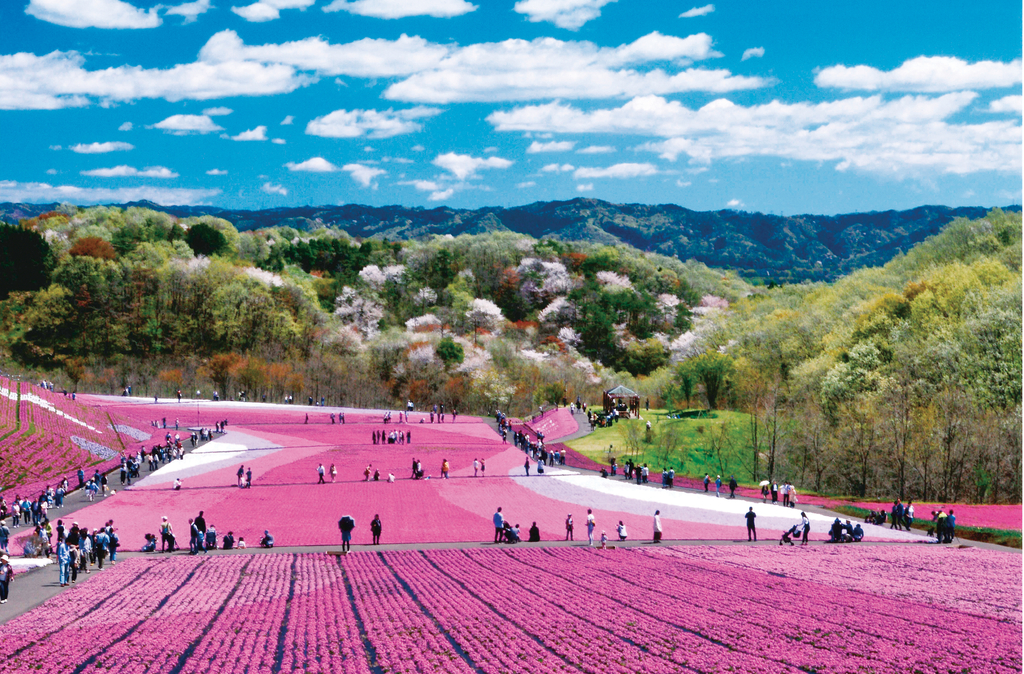
We use cookies on this site to enhance your user experience. If you continue to browse, you accept the use of cookies on our site. See our cookis policy for more information.
In Japan there are marked changes in the four seasons, and the trees and flowers appear different in each season, including the cherry blossoms in spring and the autumn leaves in fall. In Tochigi Prefecture, mid-April to June following cherry blossom viewing season is an especially good time to see wisteria blooms that form a canopy under the sky and azalea with lovely red and pink flowers. Here, we introduce Tochigi Prefecture as a noted place for viewing flowers.
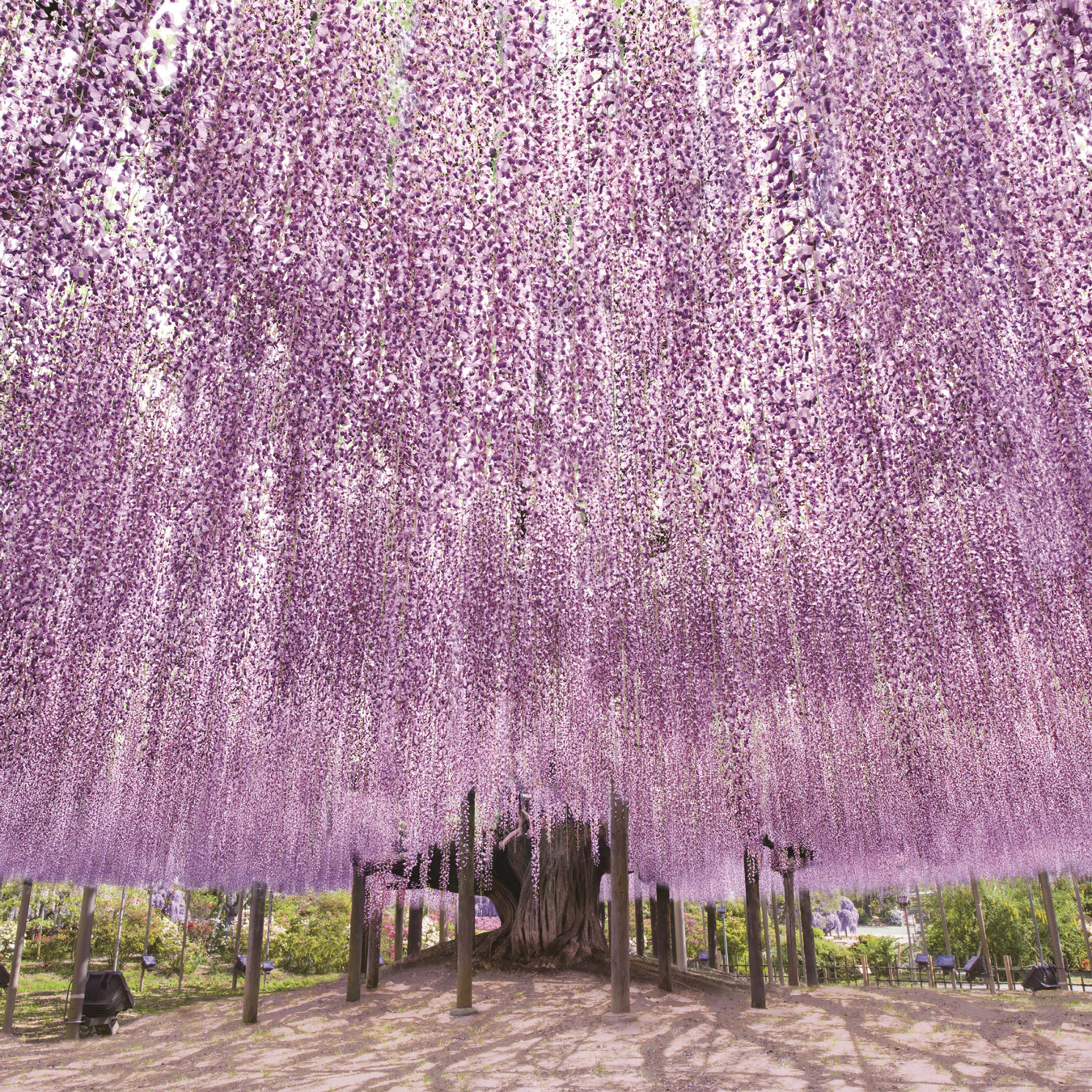
Ashikaga Flower Park is a flower theme park in the city of Ashikaga in southern Tochigi Prefecture. Within the extensive 100,000 m2 of park grounds there are over 350 wisteria plants that bloom in turn from April to May in a kaleidoscope of colors including pink, purple, white, and yellow.
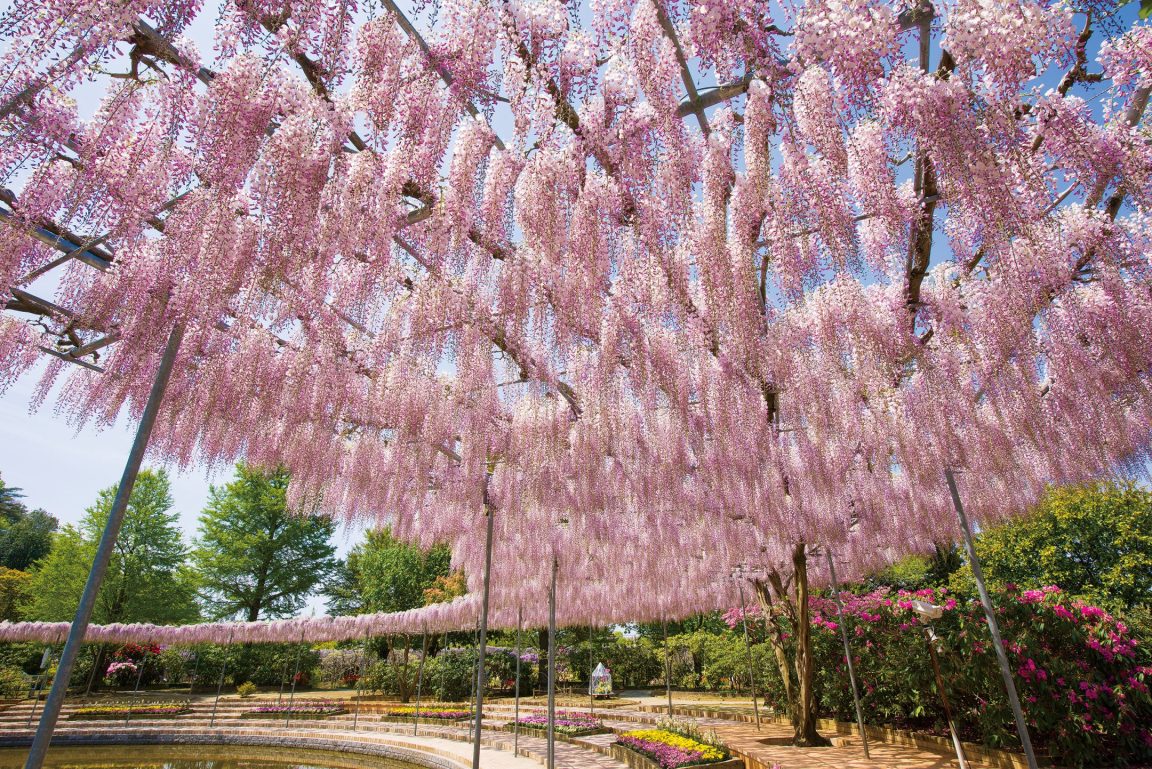
The wisteria plant has existed in Japan since ancient times. Several clusters of small flowers hang down and bloom from a single vine. Generally, that characteristic is utilized to trail the vines on wisteria trellis made from wood and bamboo to appreciate the petals.
In Ashikaga Flower Park, there is a purple-colored Great Wisteria over 160 years old that creates a wisteria trellis stretching over 1,000 m2. The expanse of countless flowers that appear during the blooming season seem to cover the sky and are said to be the most beautiful wisteria in the world.
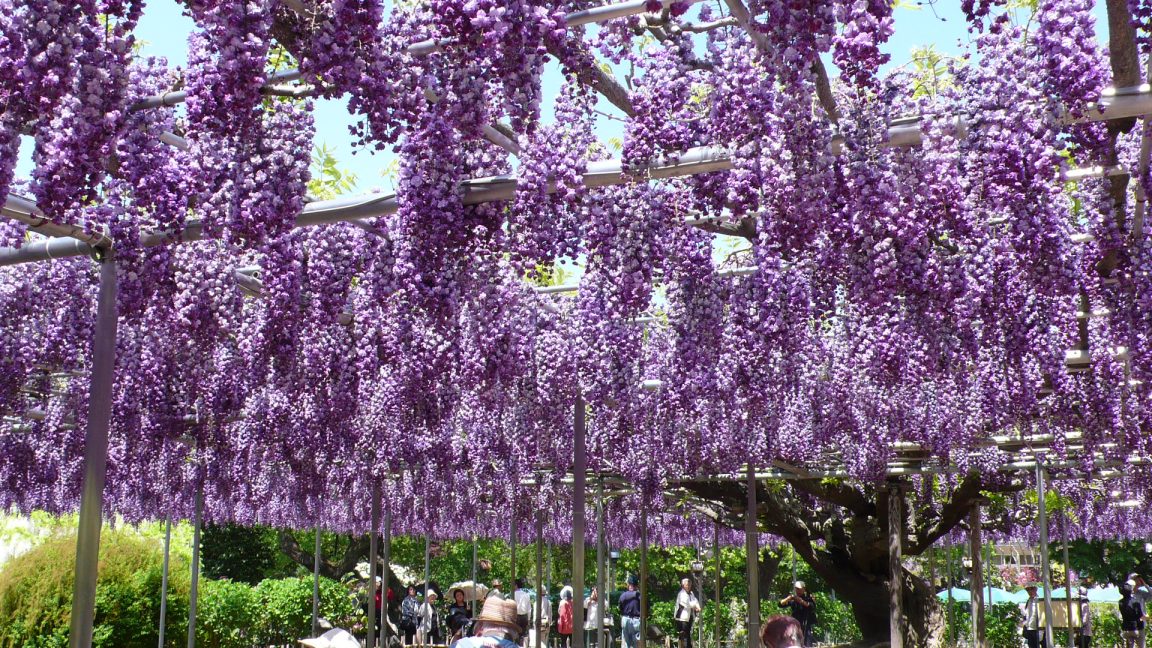
In addition to the wisteria trellis that fans out above visitors’ heads, there is also a wisteria trellis resembling a giant wall measuring 50 meters wide and 8.5 meters high that forms a stunning view. Mr. Hasegawa from Ashikaga Flower Park says, “The solid wall of beautifully flowering blooms on this screen-like wisteria trellis is made possible by the skills of our staff.”
Hasegawa: If there are flowers that aren’t blooming when visitors see it, that spoils the scenery. The flowers are nurtured based on very complex calculations so that the most beautiful photos can be taken from straight on.
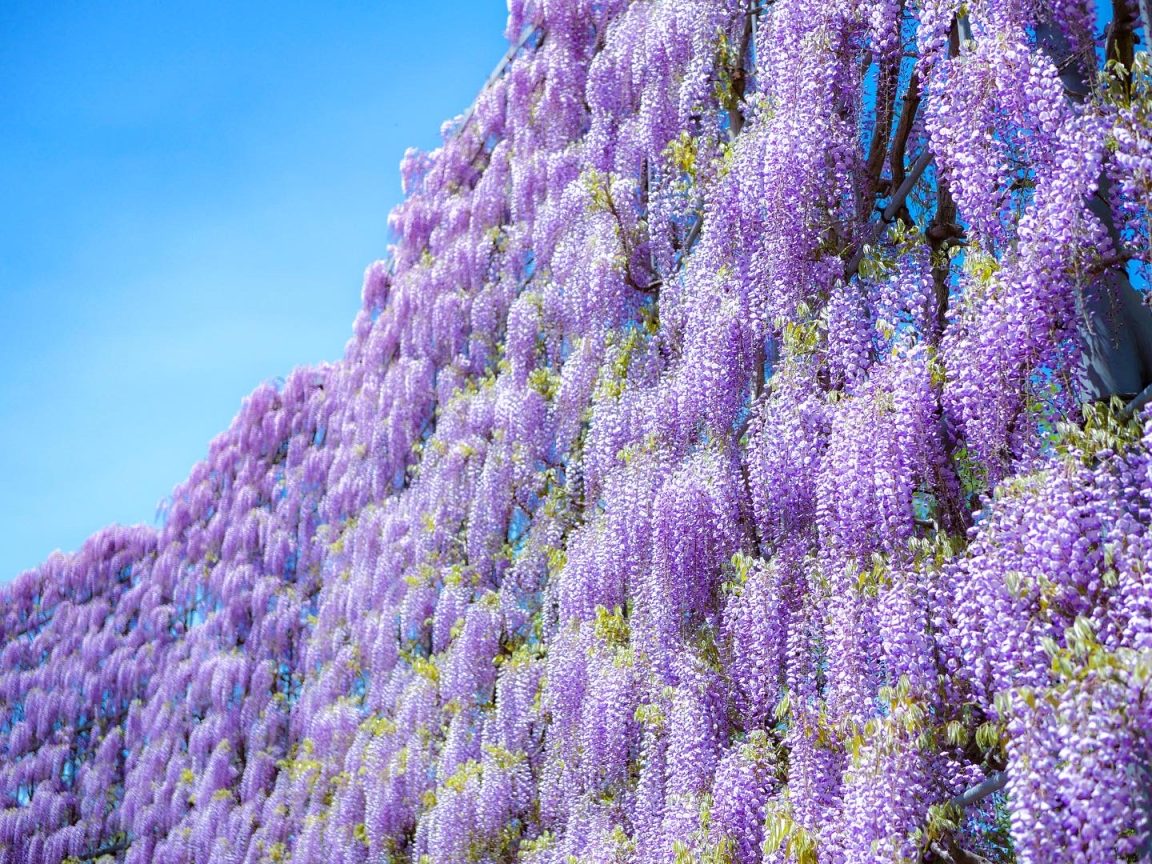
Looking back on the history of Ashikaga Flower Park, we see it was opened as Hayakawa Farm in 1968. It was located in a different region at the time, but was moved to its current site over a three-year period starting in 1994 due to a town redevelopment plan.
Hasegawa: Transplanting the wisteria was extremely difficult. In particular, since the Great Wisteria that was over 100 years old had never been transplanted before, it wasn’t known if it would take root even if successfully moved. Plus, the current site where it was moved to is a marshy area, so the soil can’t be said to be suited to growing wisteria. For that reason, it was necessary to take a long preparation period to improve the environment.
In the first fiscal year, exhaustive efforts were made to prevent the wisteria from blooming so the plant nutrients would nurture the foliage and roots. Once it was confirmed that the wisteria plants had taken root, efforts turned to managing the flowers for the first time.
However, caring for the flowers is not simple. The number and length of flowers varied widely by year even when cultivated the same way every year. The wisteria trellis in particular looks beautiful when there are many flowers, but if too many bloom the light doesn’t enter and it becomes dark when viewing them. That means they don’t look beautiful in photos. Balancing the flowers and light is extremely important so visitors can enjoy the wisteria.
While ascertaining the condition of the flowers and the reaction of the visitors who view them, after much trial and error, at last a good balance of blooming flowers has been achieved after 25 years.
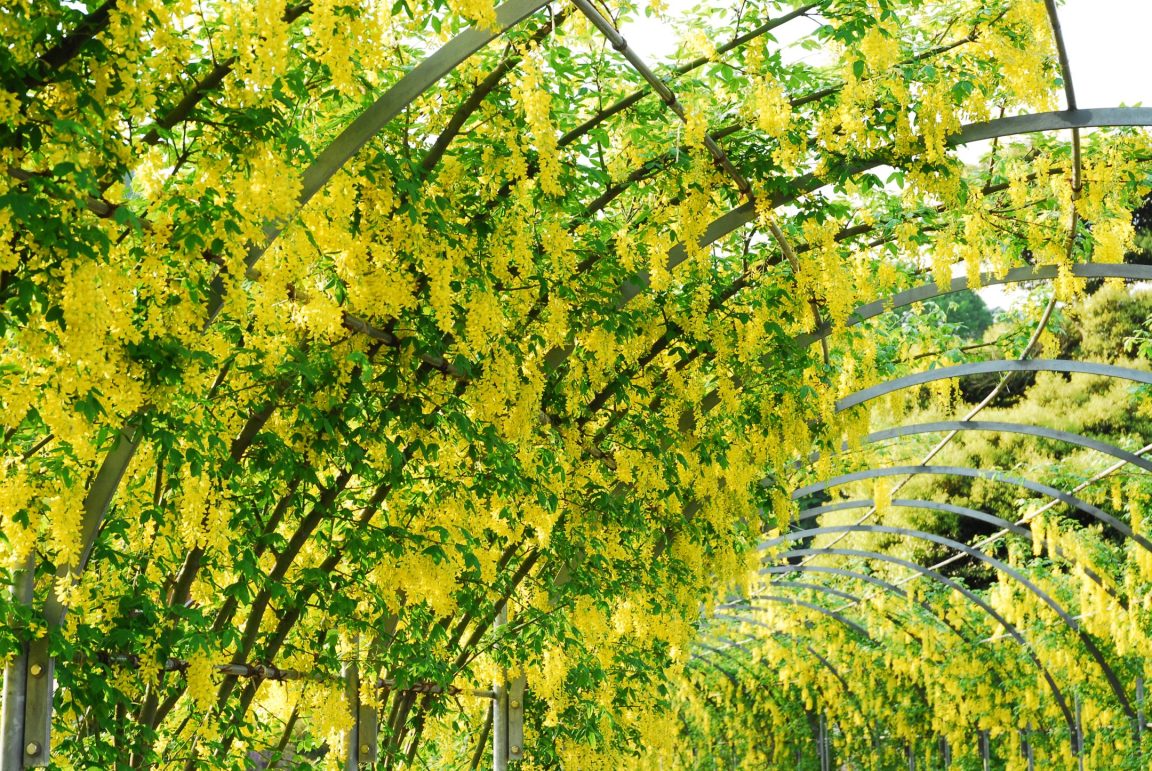
How could the beautiful flowers be made to bloom so that visitors will appreciate their beauty? This flower theme park is the result of much thought put into how visitors can enjoy the flowers and endeavors to create an experience through the flowers.
One of the efforts implemented so visitors can enjoy the flowers is to illuminate them at night for a limited time. It creates a fantastical appearance filled with shadows cast by the lights to create a look completely different from the gorgeous wisteria under the light that filters down from the daytime sky.
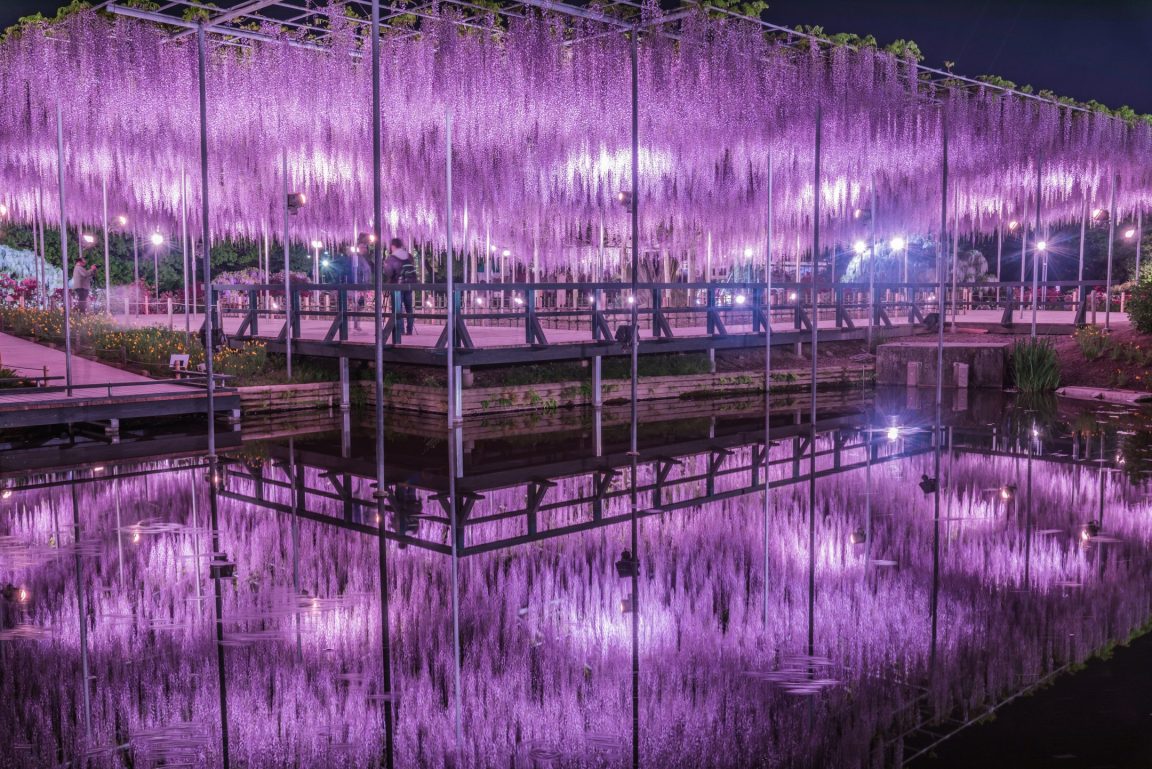
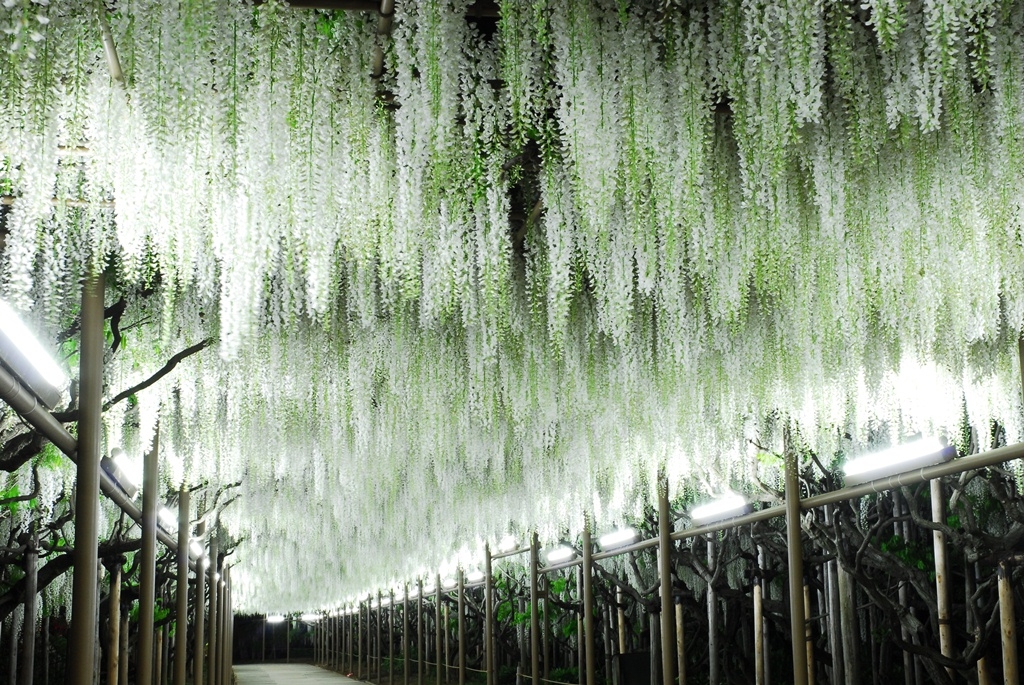
The park is now working on cultivating a new wisteria trellis called the Wisteria House based on the image of an oblong dome. The motif is the Opera House in Australia. The park is intent on creating a new highlight so that even more people can delight in the wisteria flowers.
Another notable spot for viewing flowers in Tochigi Prefecture is the Azaleas of Yahata in the Nasu highlands extending to the northern part of the prefecture. The Nasu highlands is a popular resort area with an abundance of nature and a hot spring village. On the eastern skirts of the 1,915-meter-high Mt. Chausu is a large expanse of approximately 200,000 azaleas situated around 1,000 meters above sea level. It has been chosen as one of the “100 best aromatic landscapes” designated by the government (Ministry of the Environment).

The azalea is a very familiar plant to the Japanese and has been cultivated since long ago in Japan. The Azaleas of Yahata bloom in red, pink, and white in turn from late May to late June, and the crimson red torch azaleas that bloom in late May present an especially beautiful contrast to the new greenery.
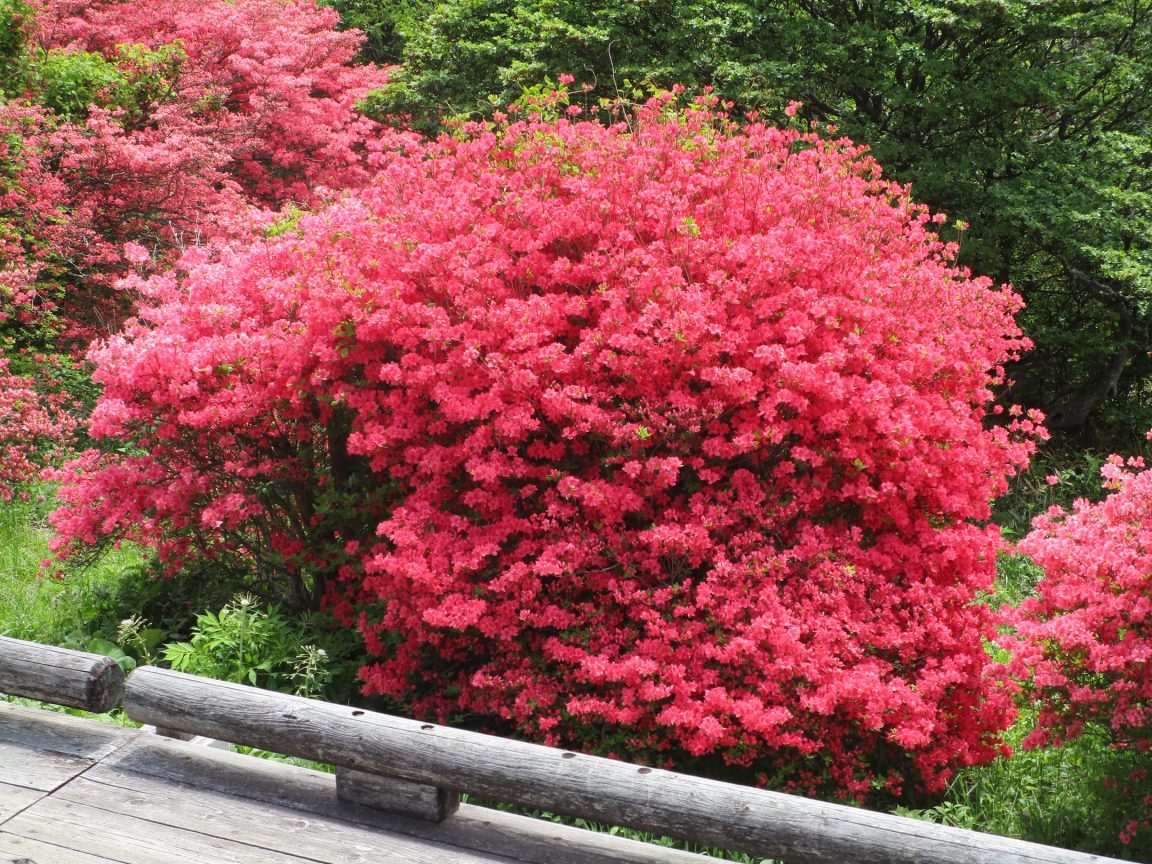
Visitors can stroll toward the observation deck along a walkway while viewing azaleas on either side. There you will see a sweeping landscape of azaleas blooming right in front of you against a backdrop of Mt. Chausu in the distance.
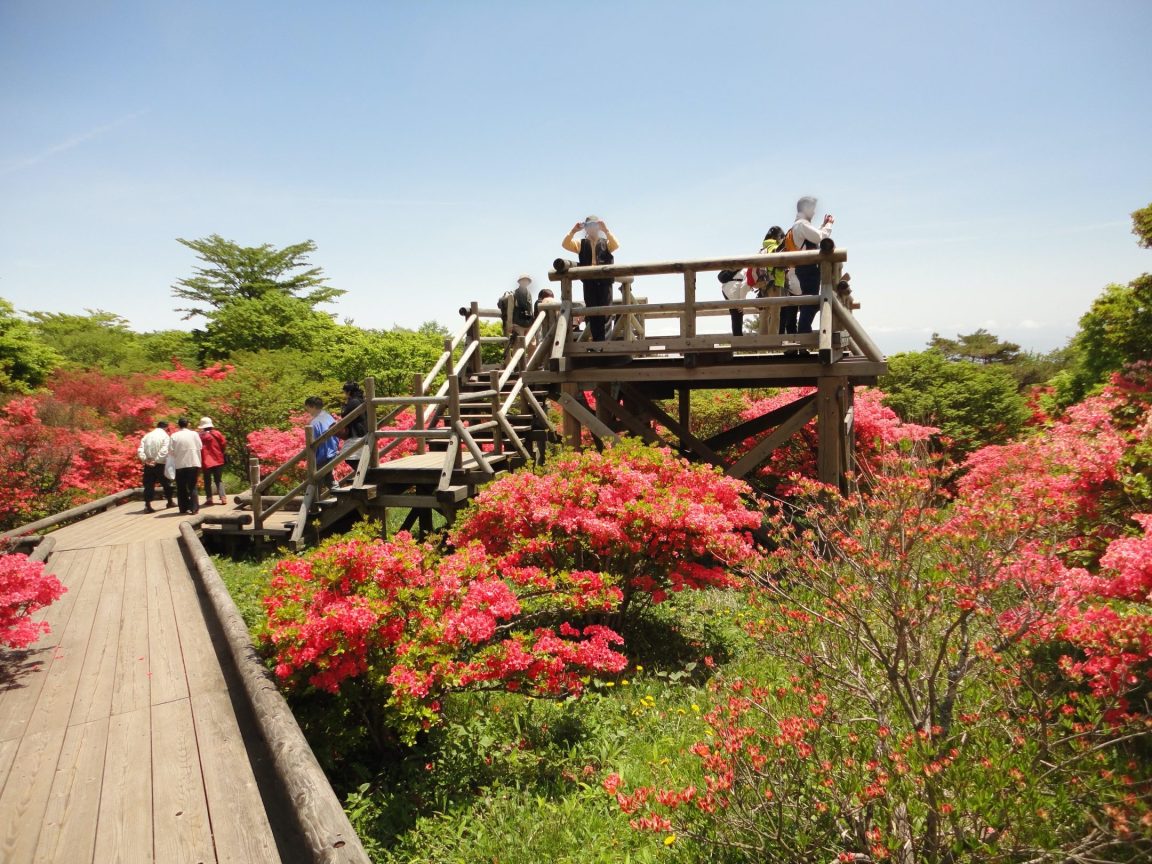
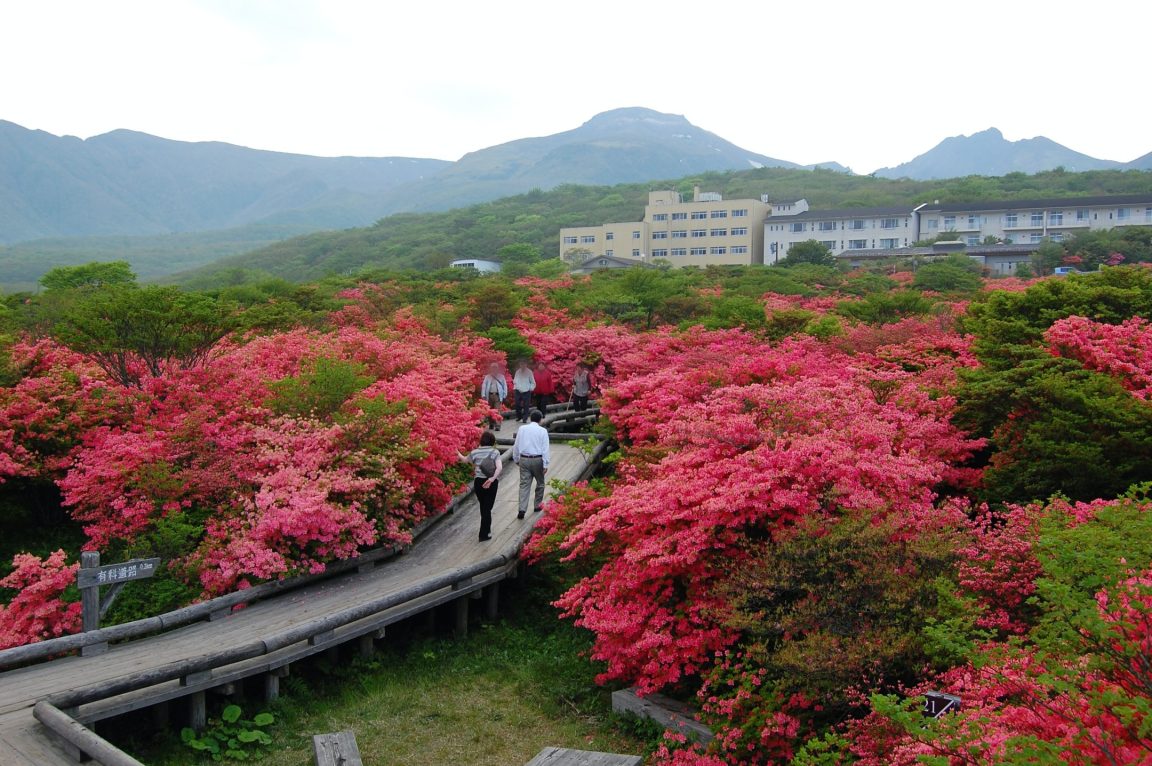
Before the Azaleas of Yahata formed, this was a pasture for beef cattle, military horses called Nasu koma, and workhorses. This plant community formed because the Nasu koma and beef cattle preferred not to eat the azaleas, which resulted in the formation of this landscape since they remained after the animals ate other plants. Once the land was no longer used as pasture, plants that impede the growth of azaleas were cut down to maintain this scenery.
A representative responsible for the Azaleas of Yahata from Tochigi Prefecture, which manages this area, says that, “Care is taken to improve the environment so that everyone can enjoy the Azaleas of Yahata.”
Representative: A universal design was used for the wooden walkway so that even persons in wheelchairs can get around safely. In addition, efforts have been made to provide multilingual guide signs in languages including English, Chinese, and Korean so that visitors from abroad can also enjoy the area.
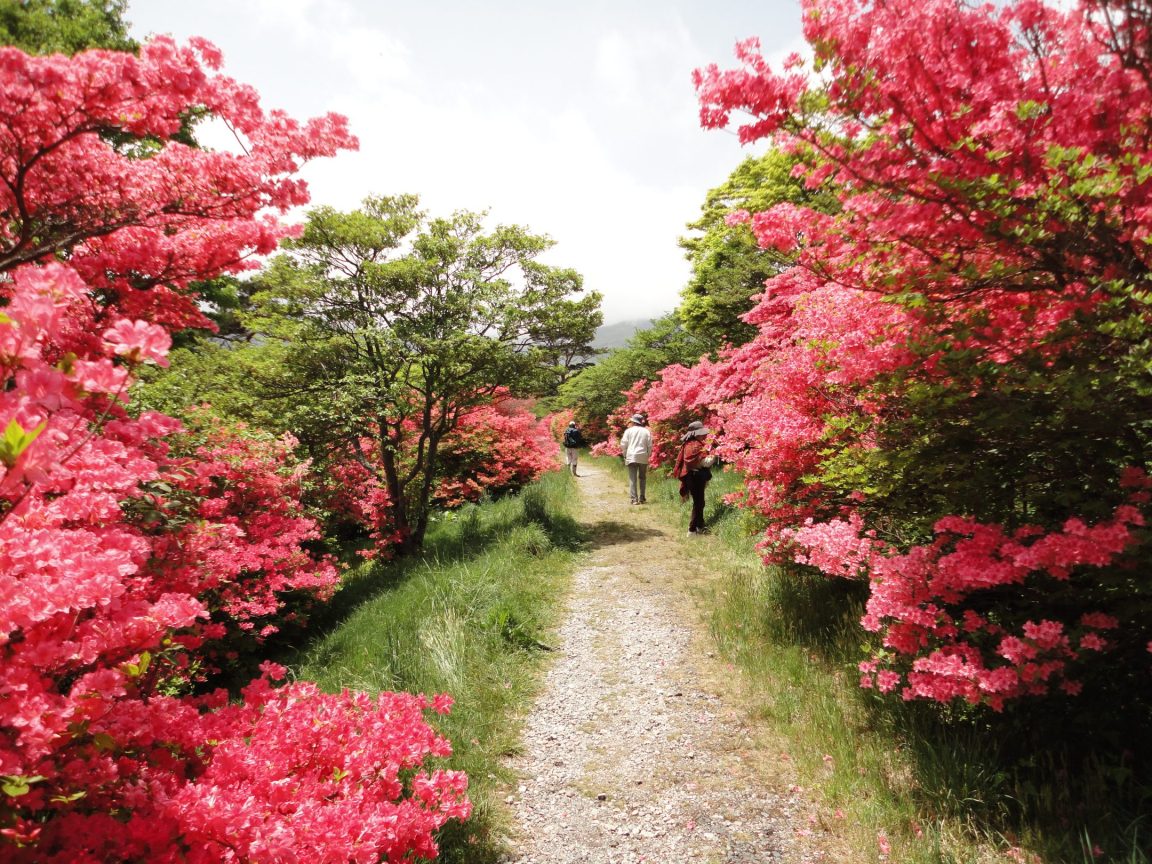
Various relevant groups cooperate in activities to protect the landscape. For example, every year activities are conducted with local high school students to remove plants designated as invasive alien species, which are said to damage the ecosystem. The entire community protects this landscape and continues to maintain it.
If you want to enjoy the four seasons of Japan, we recommend including planning a trip to view flowers. In particular, the best time to view the wisteria and azaleas introduced here is between April and June when the seasons change from spring to summer and the different varieties come into full bloom in turn. Ashikaga Flower Park and the Azaleas of Yahata are places where you can feel even the smallest seasonal changes through flowers.